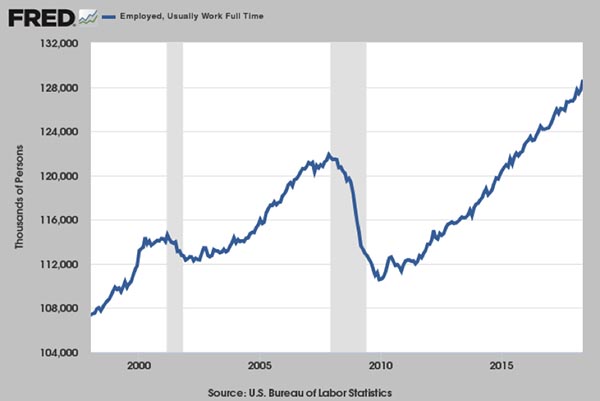
The May employment report was regarded as good, but when you dig past the top-level numbers, there are some interesting data that make it even better. The recovery that started in mid-2009 was noted for its growth in part-time jobs and slow growth in full-time ones. Now, as the current economy is growing, hours are being added to those part-time workers first, likely before businesses commit to new hires. Full-time employment set another new record, while part-time employment was down by -625,000.
This indicates that there is more slack in the markets than many of the mainstream economists say. Shifting from part-time to full-time is a benefit to workers and also their employers, because those workers are already experienced in some way. This means that small businesses, in particular, should see some good pickup in their bottom lines because of the near-instant productivity of these additional hours.
While the 3.8% unemployment rate looks good on the surface, it really can’t be compared to when it was last attained nearly 20 years ago. So many workers left the workforce that this figure implies a tighter labor than it really is. We will really know we have a strong economy when the active labor force starts increasing. It has, in spurts, but last month’s growth was meager. The overall employment picture has plenty of room to improve, and, paradoxically, the unemployment rate may start increasing because more people enter and re-enter the workforce. This is why it’s important to look past the unemployment rate and instead focus on the number of employed workers. Those data are available at the Bureau of Labor Statistics household survey data table. In May, the report showed 155,474,000 employed workers. That figure has grown by +215,000 per month since last year at this time. Those who usually work full-time has increased to 128,657,000, at the rate of +253,000 per month, including the shift of part-timers to new full-time roles.














